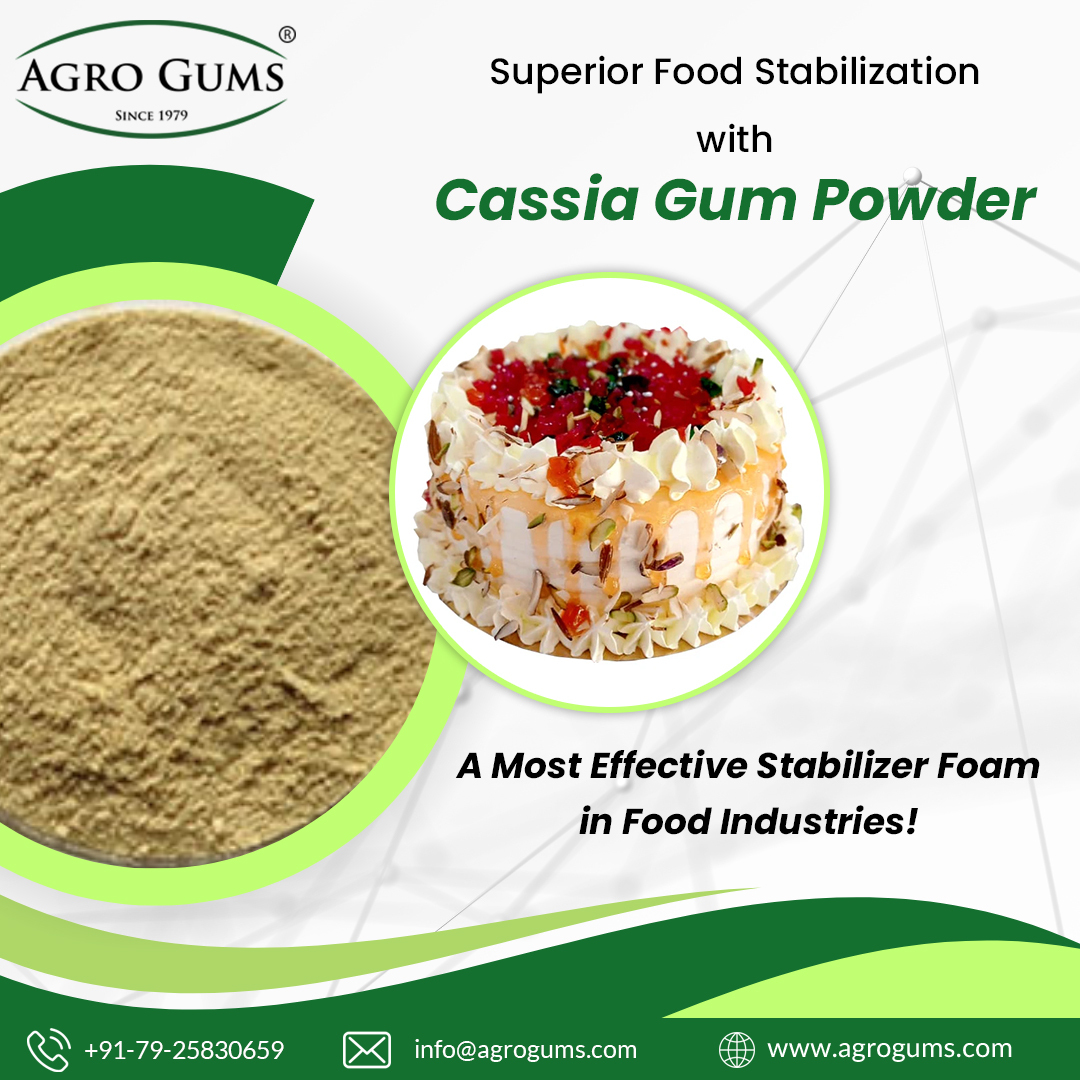Cassia gum powder, derived from the seeds of the cassia plant, has emerged as a versatile hydrocolloid in food, pet care, and industrial applications. Its unique properties, including its ability to form gels when combined with other hydrocolloids like carrageenan and xanthan gum, have made it an essential ingredient in various formulations. This article explores the natural compatibility of cassia gum powder with carrageenan and xanthan, focusing on the synergistic benefits of these combinations.
Understanding Cassia Gum Powder and Its Role
Cassia gum is a refined galactomannan polysaccharide composed of mannose and galactose units. Its primary functional property is its ability to form gels and provide stabilization in diverse formulations. This versatility stems from its branched polysaccharide structure, which interacts effectively with other hydrocolloids like carrageenan and xanthan gum.
Key Features of Cassia Gum Powder:
- Derived from Cassia tora seeds.
- Excellent water-binding and thickening properties.
- Compatible with other hydrocolloids, especially carrageenan and xanthan gum.
- Available in refined and food-grade forms for diverse applications.
Cassia Gum and Carrageenan: A Perfect Gel Synergy
Carrageenan, derived from red seaweed, is a hydrocolloid known for its ability to form firm and thermoplastic gels. When combined with cassia gum powder, the gelling properties of carrageenan are significantly enhanced.
How Cassia Gum Enhances Carrageenan Gels?
- Increased Gel Strength: Adding cassia gum to carrageenan formulations results in firmer gels. This is particularly beneficial in products requiring stable, thermally reversible gels, such as desserts and jellies.
- Improved Texture: The combination produces gels with a smoother and more elastic texture, improving the sensory experience of food products.
- Concentration-Dependent Synergy: As the concentration of cassia gum increases, the gel strength and consistency improve, allowing precise control over the formulation.
Applications of Cassia Gum and Carrageenan:
- Dairy Products: Enhanced texture and stability in yogurts and puddings.
- Confectionery: Improved gel strength and elasticity in gummies and candies.
Cassia Gum and Xanthan Gum: A Unique Interaction
Xanthan gum, a microbial polysaccharide, is another hydrocolloid widely used for its thickening and stabilizing properties. Unlike carrageenan, xanthan gum cannot form gels on its own. However, when combined with cassia gum powder, the two create a unique elastic and rubbery gel.
Why Cassia Gum Forms Gels with Xanthan?
The branched galactose or mannose structure of cassia gum interacts with xanthan’s molecular structure, forming a network that results in gel formation. This interaction provides:
- Elastic Texture: The gels formed are rubbery and elastic, making them ideal for specific applications.
- Lower Hydrocolloid Levels: The combination achieves desired properties with minimal hydrocolloid usage, reducing production costs.
Applications of Cassia Gum and Xanthan Gum:
- Sauces and Dressings: Enhanced viscosity and stability in emulsified products.
- Bakery Products: Improved texture and moisture retention in gluten-free formulations.
- Pet Foods: Provides a stable and elastic texture, improving the palatability of wet pet food.
The Structural Advantages of Cassia Gum Powder
Cassia gum’s unique galactose-to-mannose ratio enables its exceptional compatibility with carrageenan and xanthan gum. This structure allows for:
- Enhanced Gel Formation: Stronger and more elastic gels in combination with other hydrocolloids.
- Improved Stability: Prevention of phase separation in emulsions and suspensions.
- Versatility: Adaptability across various food and industrial applications.
Industrial Applications of Cassia Gum Combinations
1. Food Industry
- Dairy and Desserts: Cassia gum and carrageenan enhance the stability and texture of products like puddings and yogurts.
- Bakery: Cassia gum and xanthan gum improve dough consistency and extend shelf life.
- Meat Processing: These combinations act as binders and stabilizers in processed meat products, ensuring a firm and uniform texture.
2. Pet Food
Cassia gum is widely used in wet pet food formulations, often in combination with xanthan gum or carrageenan. This ensures consistent gel structures and improves the visual and textural appeal of the product.

3. Cosmetics and Pharmaceuticals
The compatibility of cassia gum with xanthan and carrageenan also extends to non-food applications, including:
- Stabilizing emulsions in skincare products.
- Enhancing viscosity in pharmaceutical syrups and gels.
Benefits of Using Cassia Gum with Carrageenan and Xanthan
1. Enhanced Functionality
Combining cassia gum with carrageenan or xanthan gum leverages the strengths of each hydrocolloid, resulting in superior gels, improved viscosity, and better stabilization.
2. Cost Efficiency
The ability of cassia gum to function effectively at lower concentrations reduces the need for additional hydrocolloids, making it a cost-effective solution for manufacturers.
3. Sustainability
As a plant-derived hydrocolloid, cassia gum aligns with the global push for natural and sustainable ingredients. Its compatibility with other natural gums further enhances its appeal.
Scientific Basis of Cassia Gum Compatibility
The compatibility of cassia gum powder with carrageenan and xanthan gum lies in its molecular structure. Refined cassia gum powder has a unique ratio of galactose to mannose sugars, which enables it to interact effectively with these hydrocolloids. The interaction results in:
- Enhanced Gelation: The formation of a three-dimensional network that traps water, creating firm and stable gels.
- Improved Rheology: Better control over viscosity, elasticity, and flow behavior in liquid and semi-solid formulations.
- Stabilization of Emulsions: Preventing phase separation in complex formulations
Factors to Consider When Using Cassia Gum Blends
To achieve optimal results when combining cassia gum with carrageenan or xanthan gum, it is essential to consider:
- Concentration Ratios: The ratio of cassia gum to the secondary hydrocolloid determines the final gel strength and texture.
- pH Sensitivity: The effectiveness of cassia gum blends can vary depending on the pH of the formulation.
- Temperature Stability: Understanding the thermal stability of the blend ensures consistent performance during processing.
FAQs
Conclusion
Cassia gum powder’s natural compatibility with carrageenan and xanthan gum has unlocked new possibilities for industrial applications. From creating firm thermoplastic gels to stabilizing emulsions and improving texture, these synergistic combinations provide manufacturers with versatile and cost-effective solutions. With its unique structural advantages and growing demand for sustainable ingredients, cassia gum continues to be a valuable asset in food, pet care, and beyond.
Web Design & Digital Marketing by Opal Infotech



